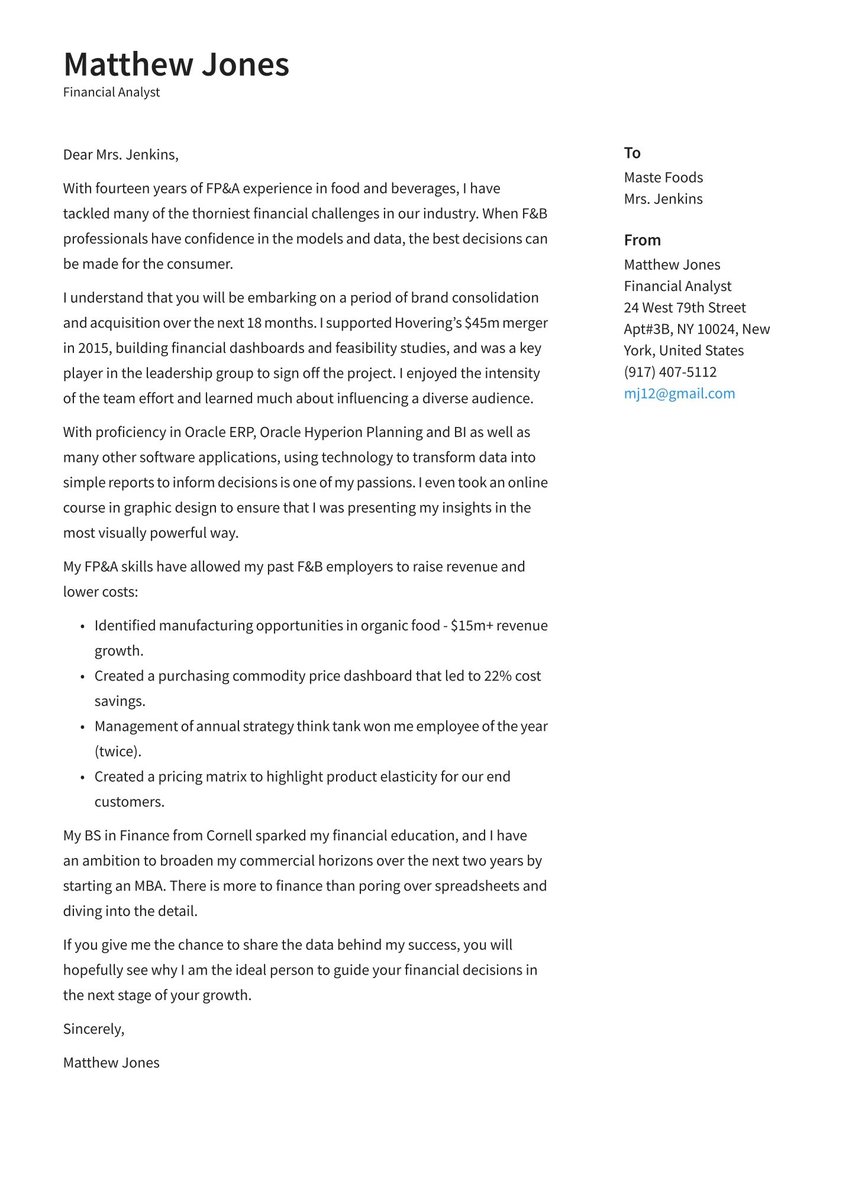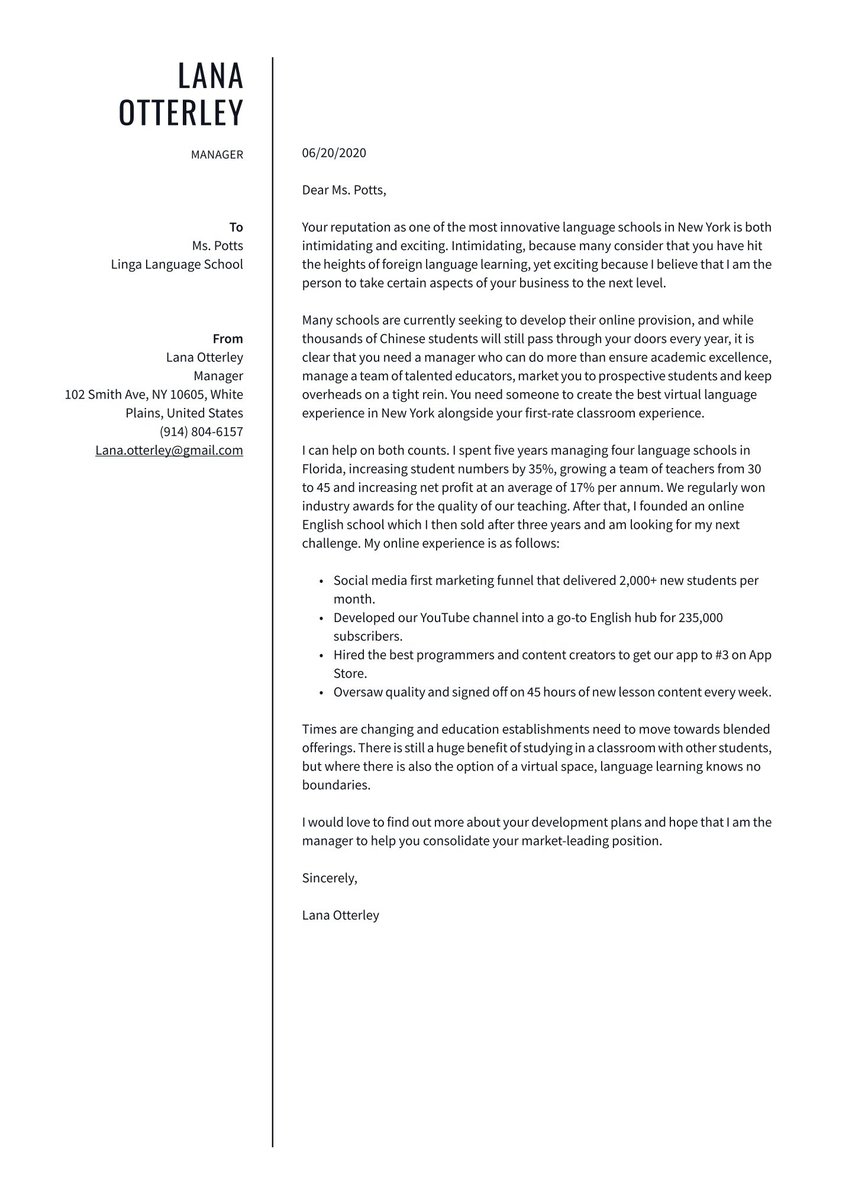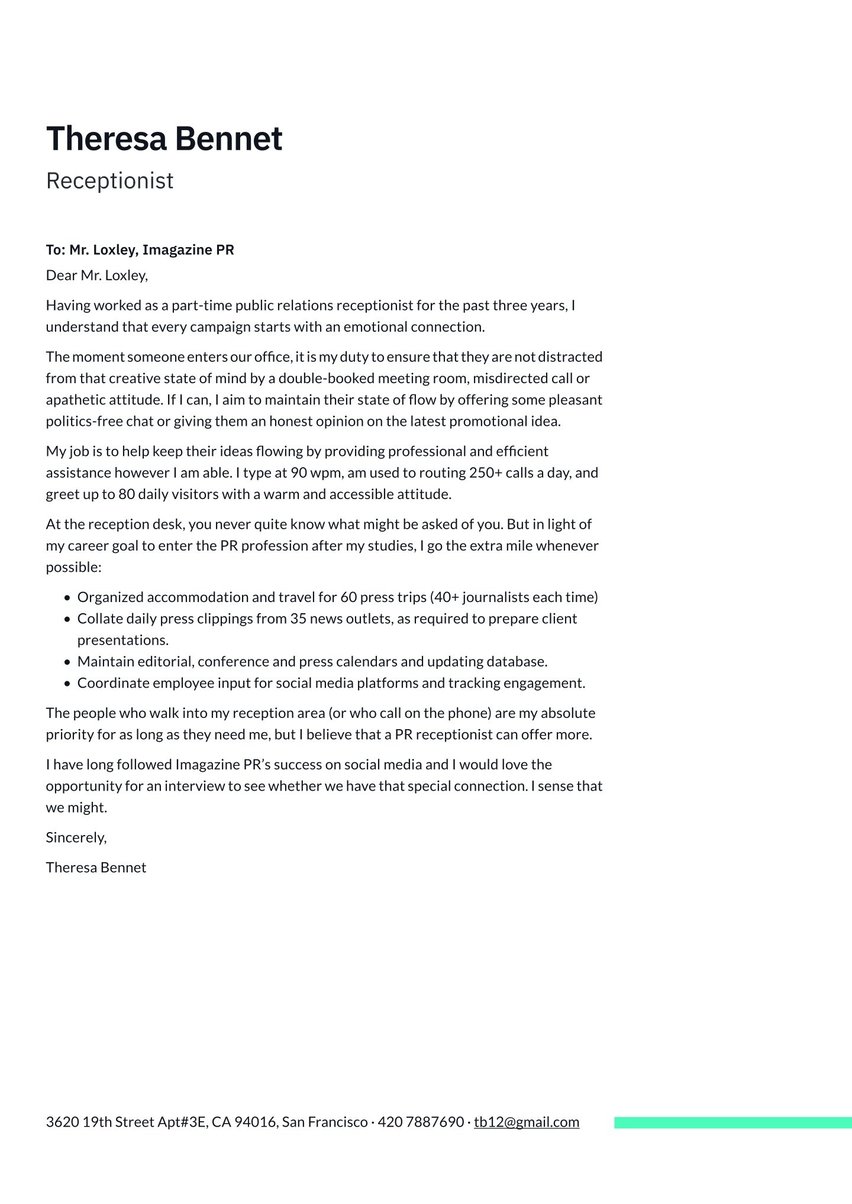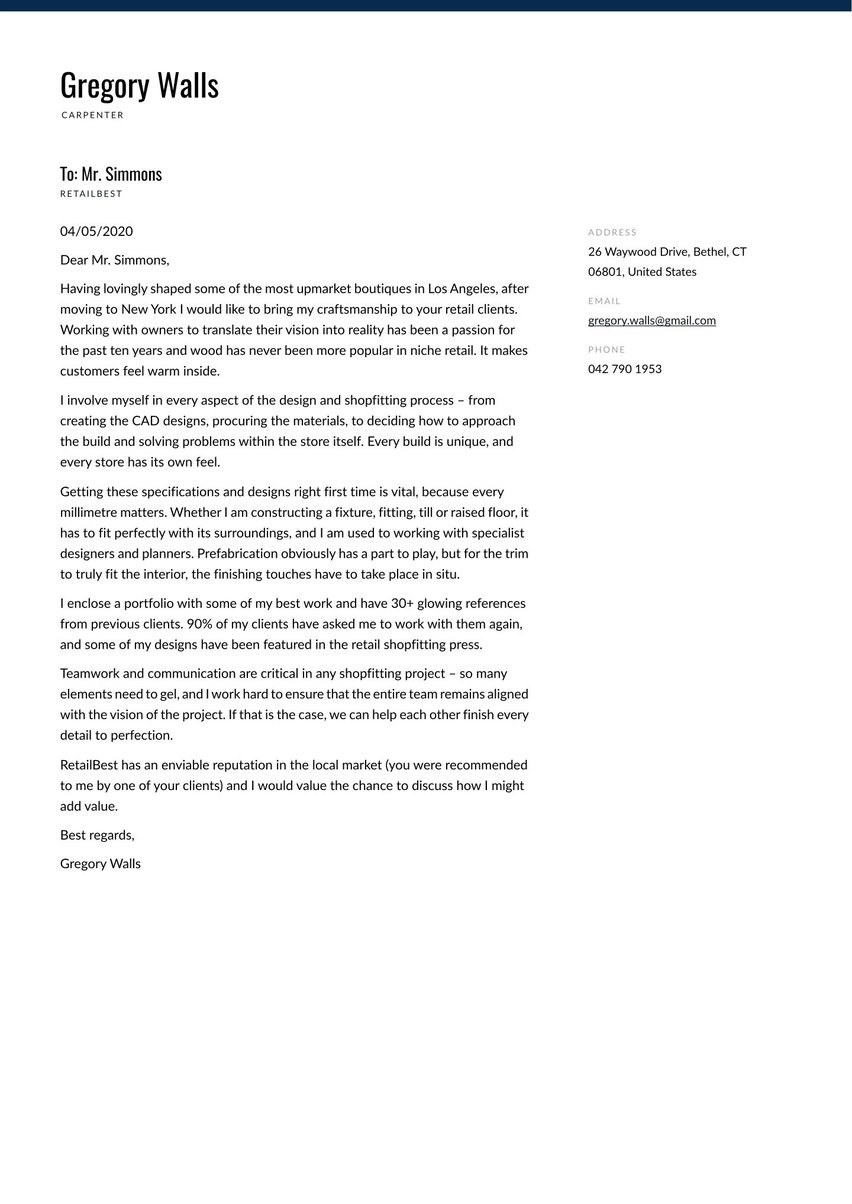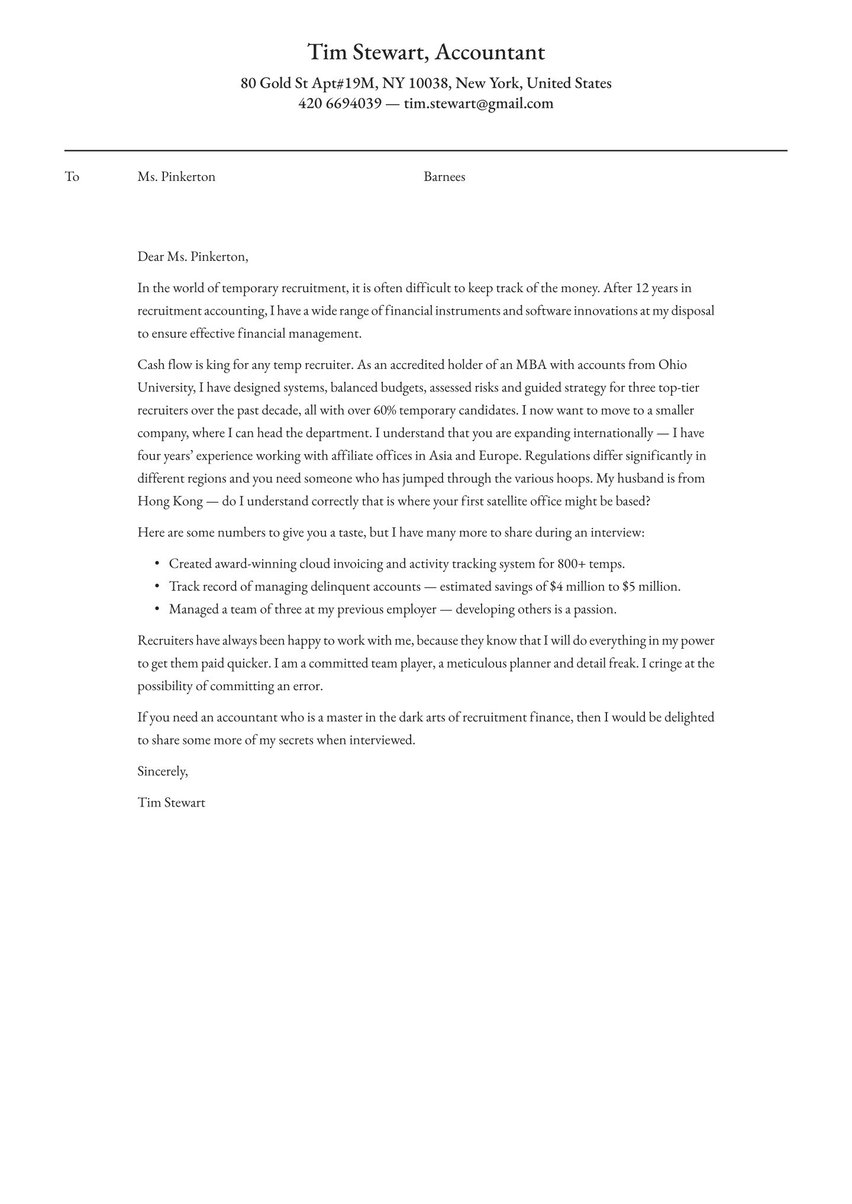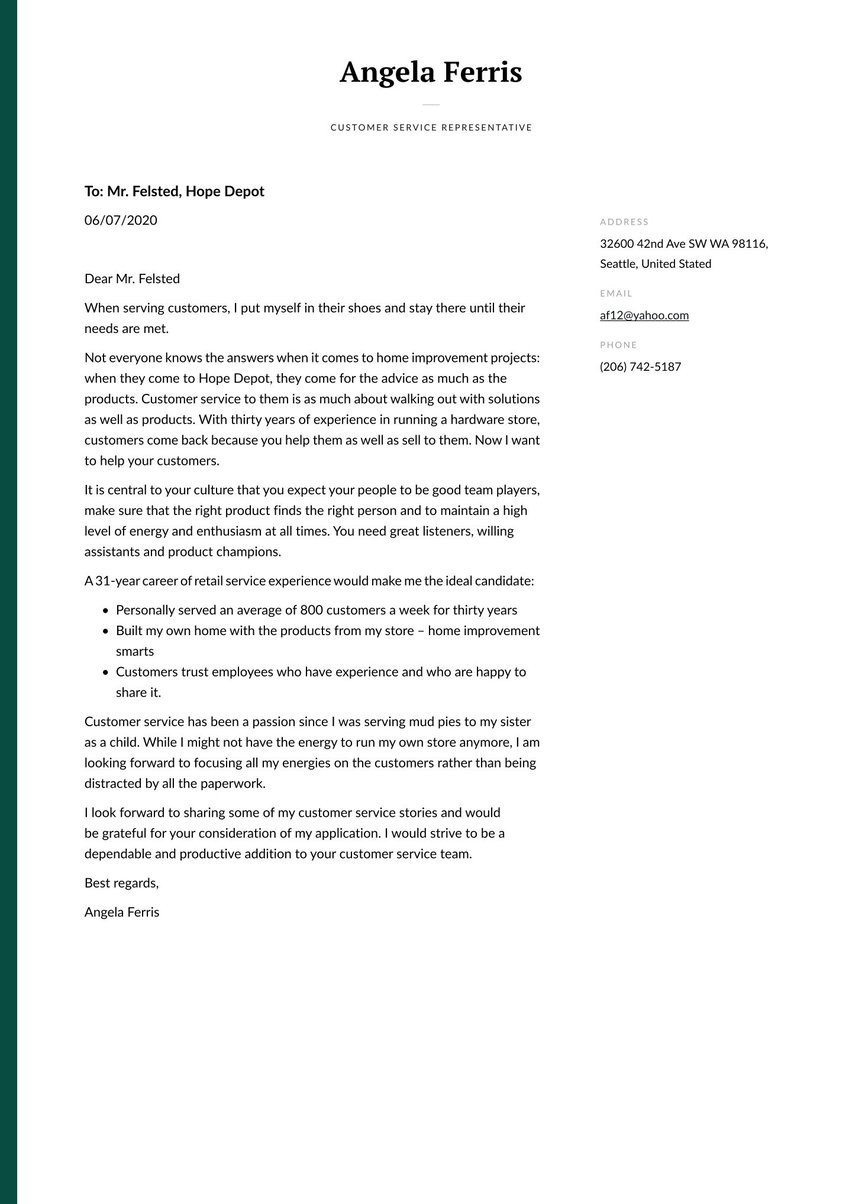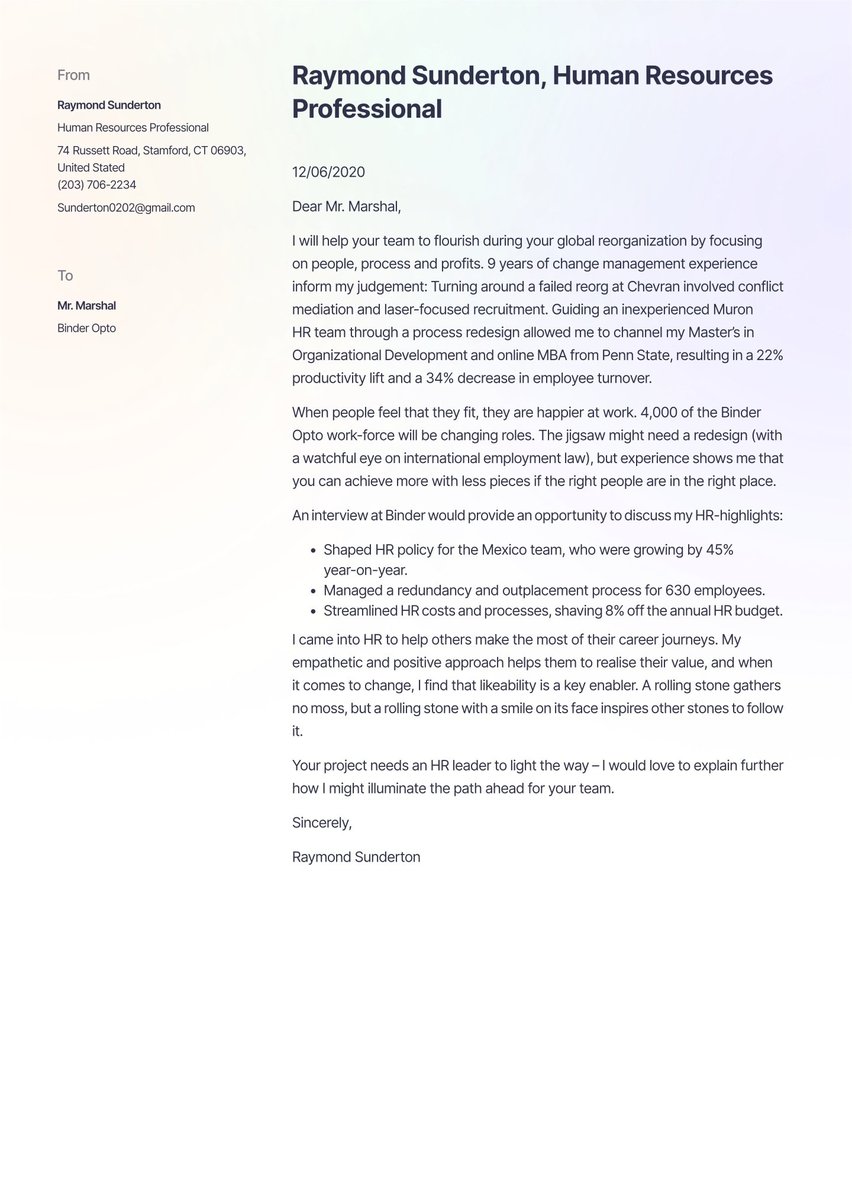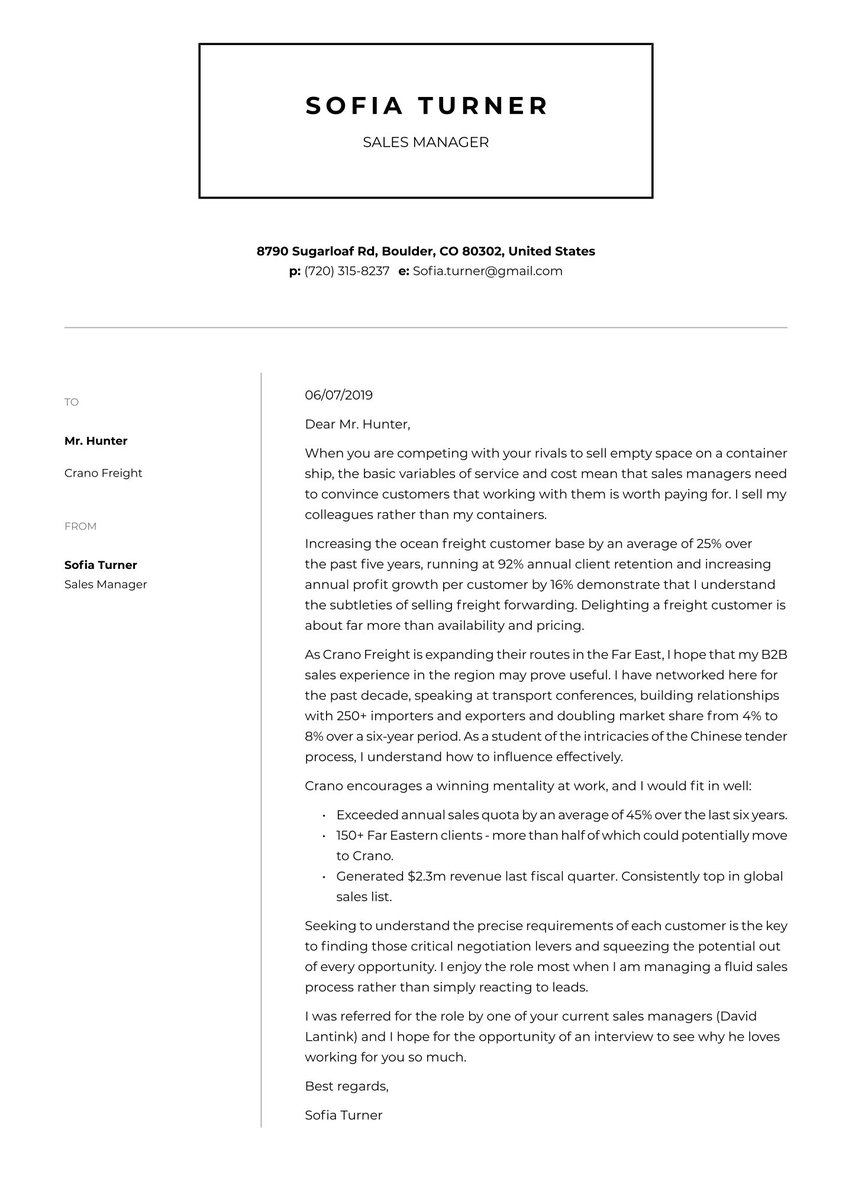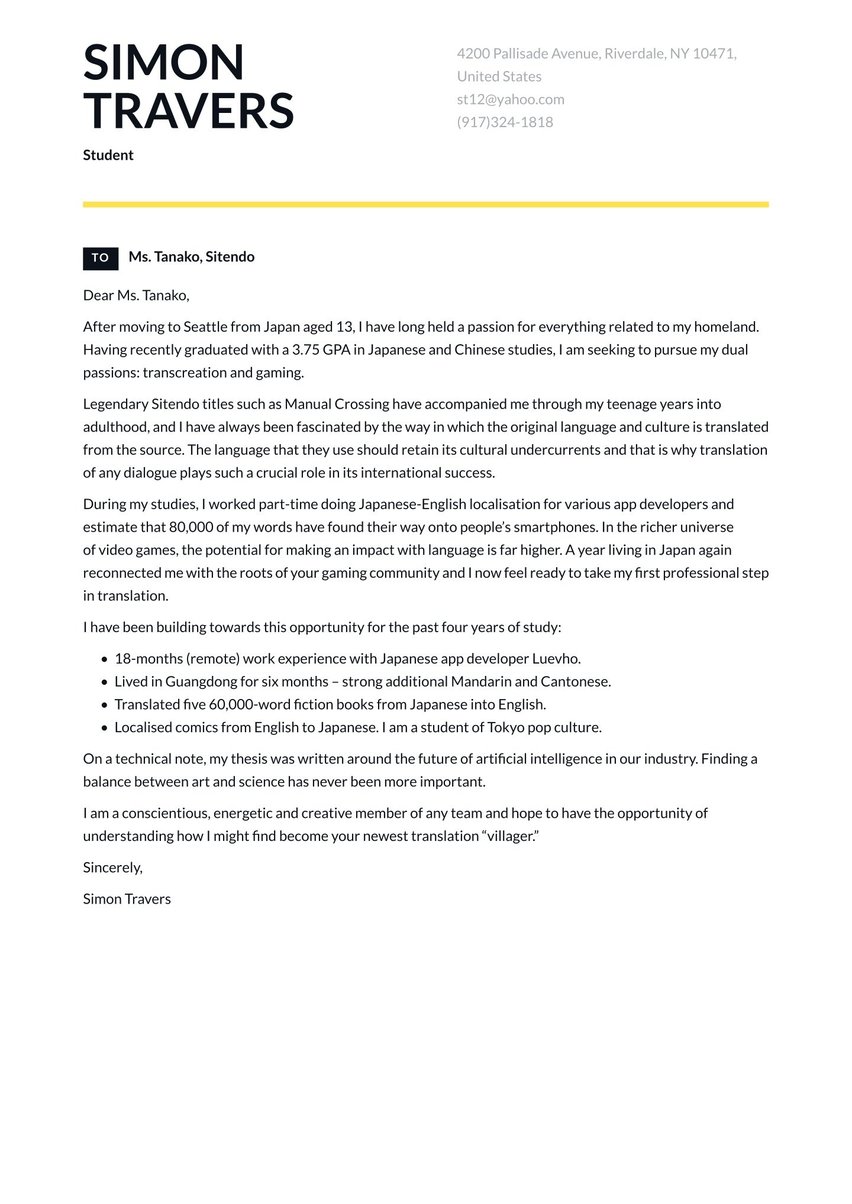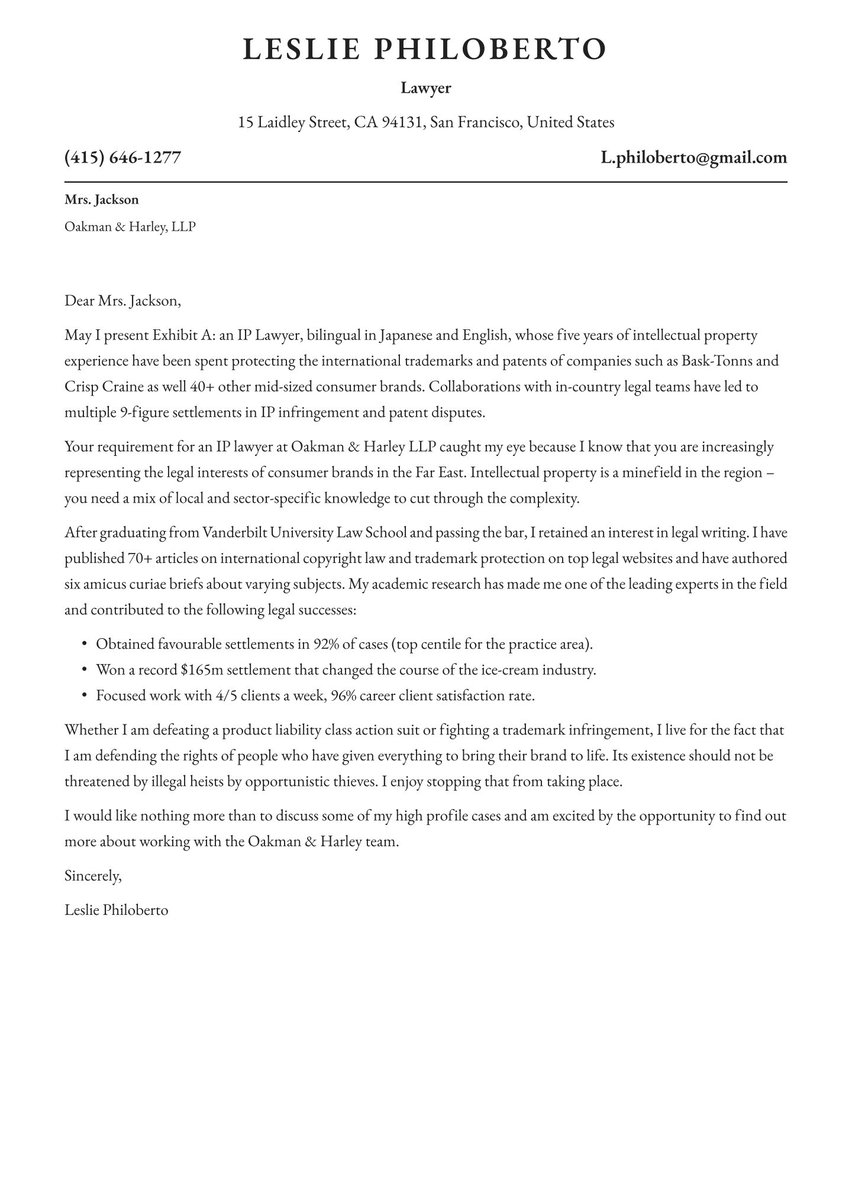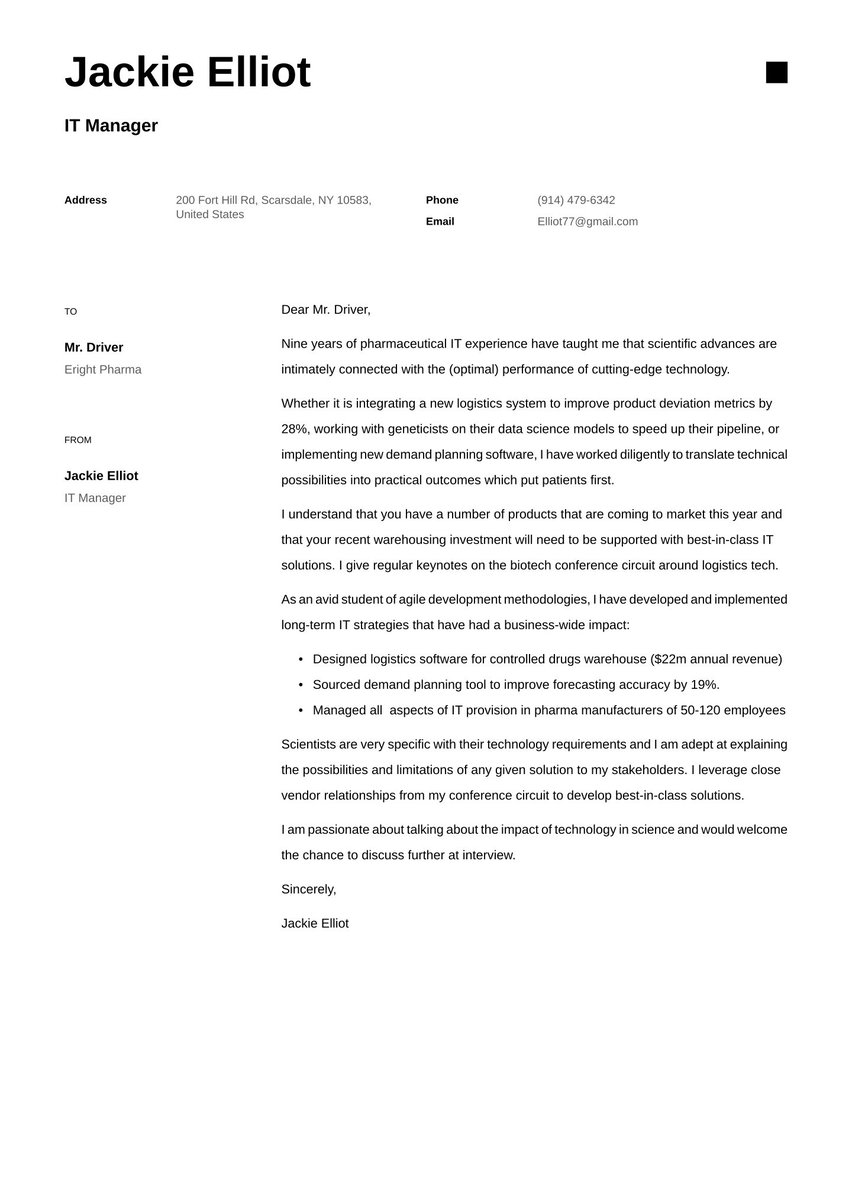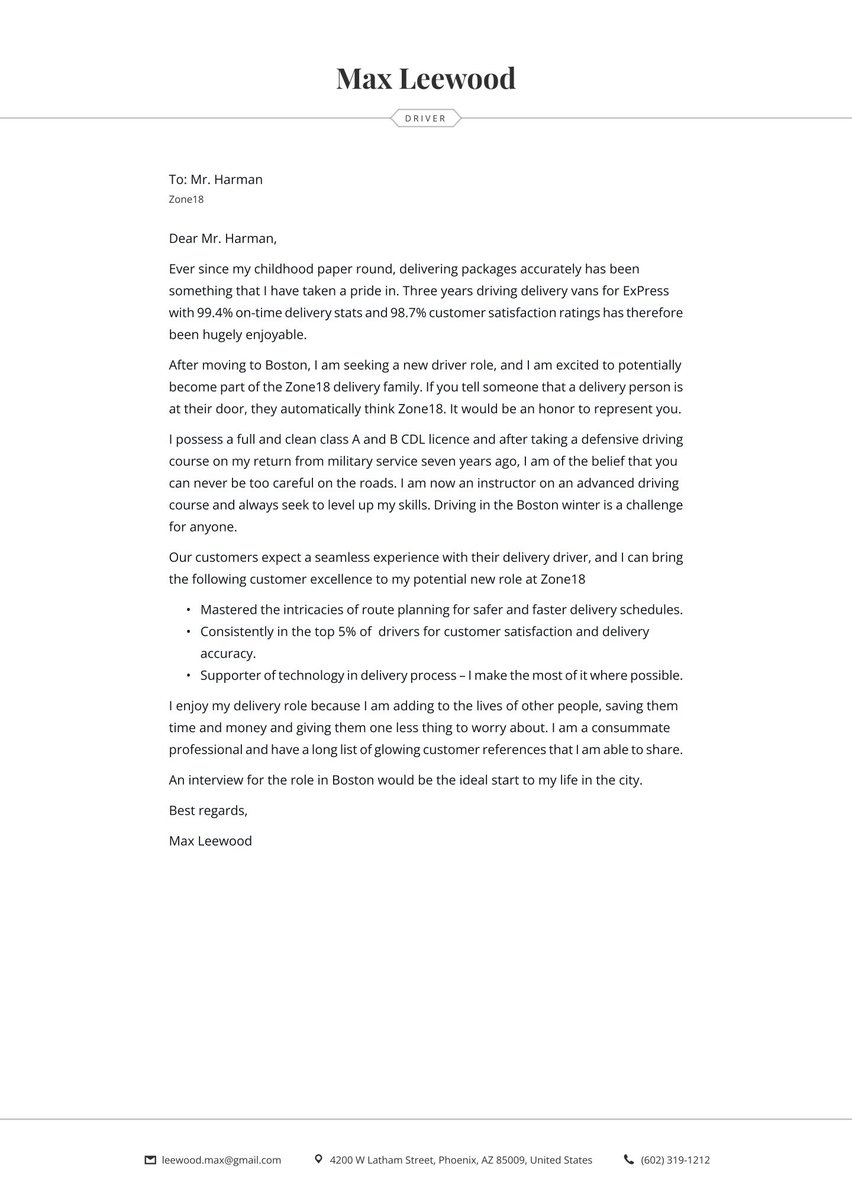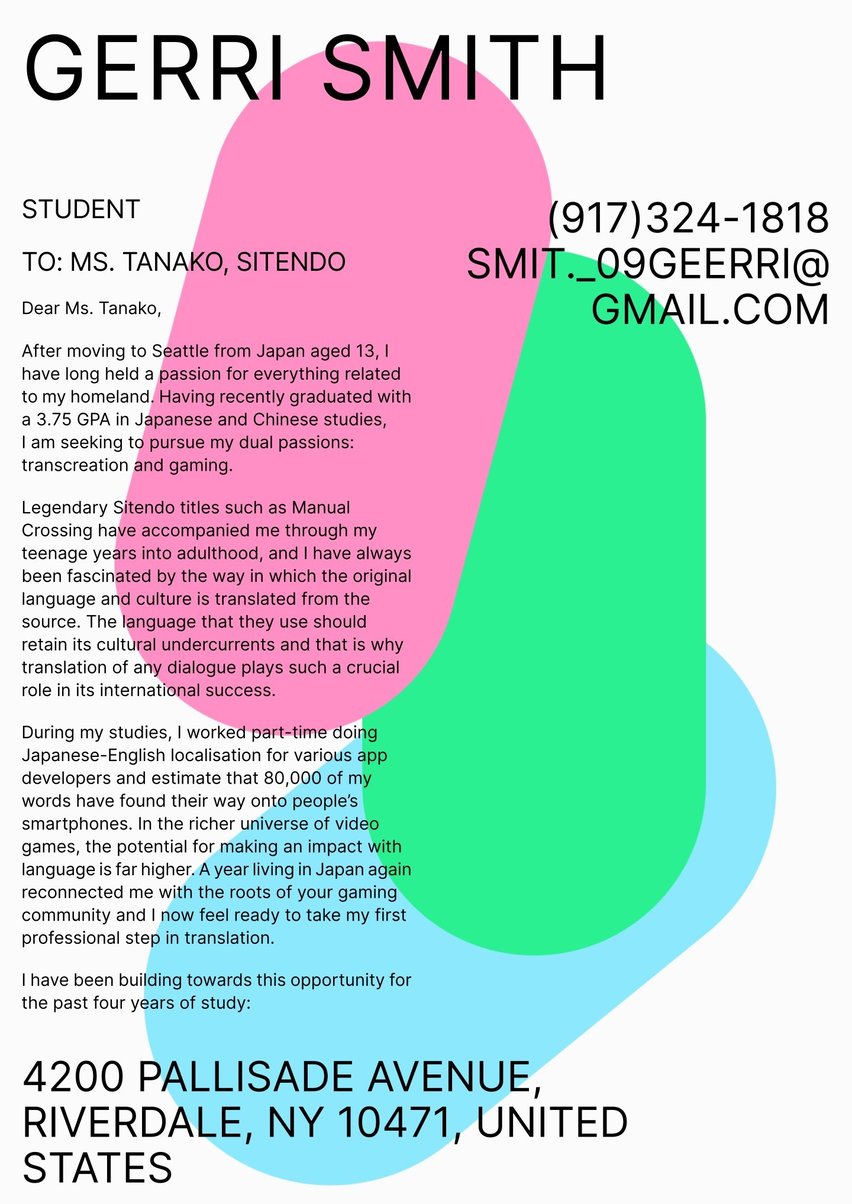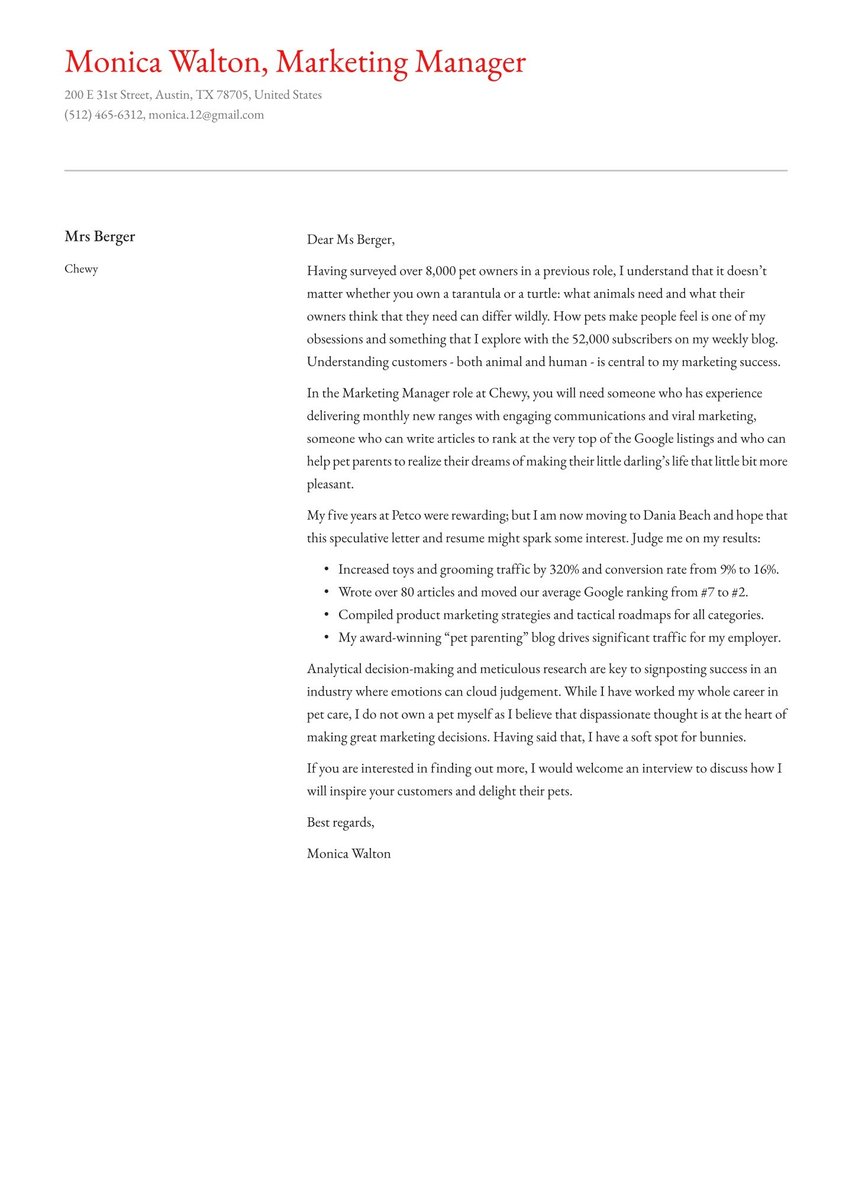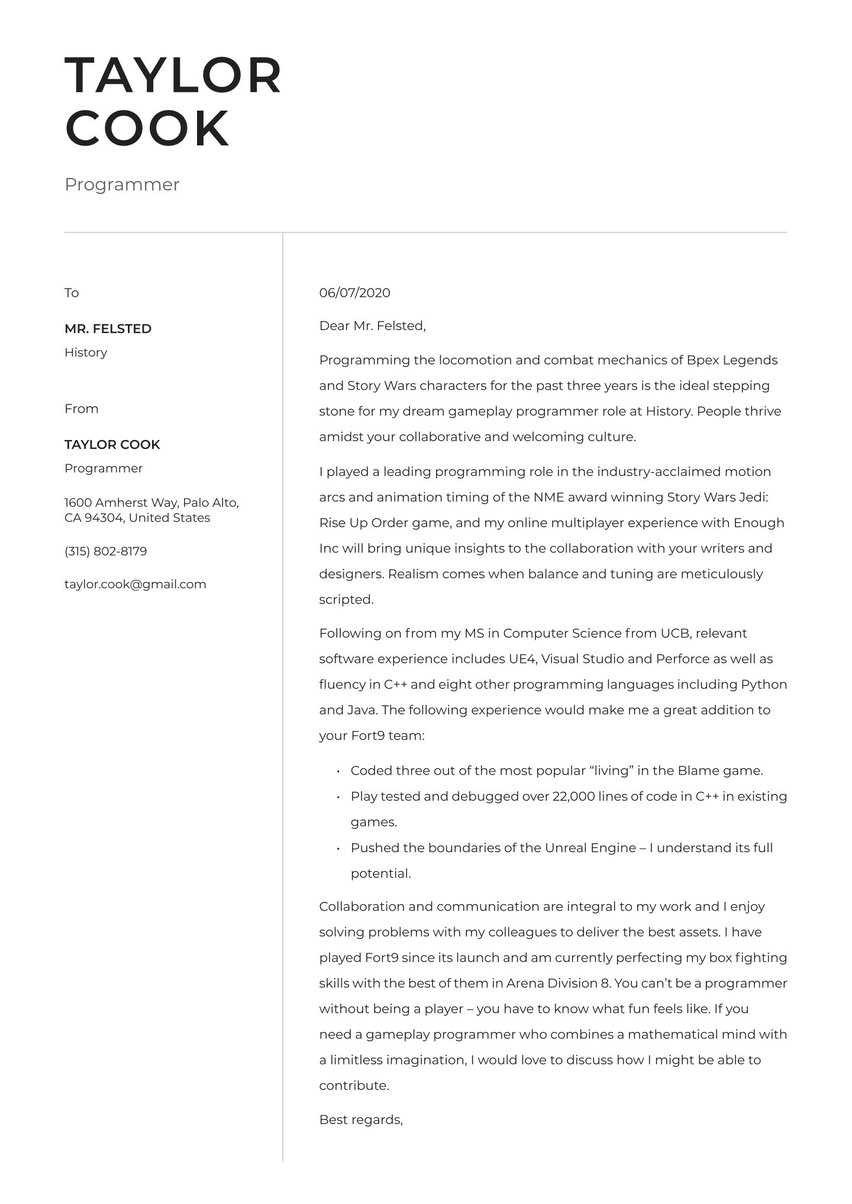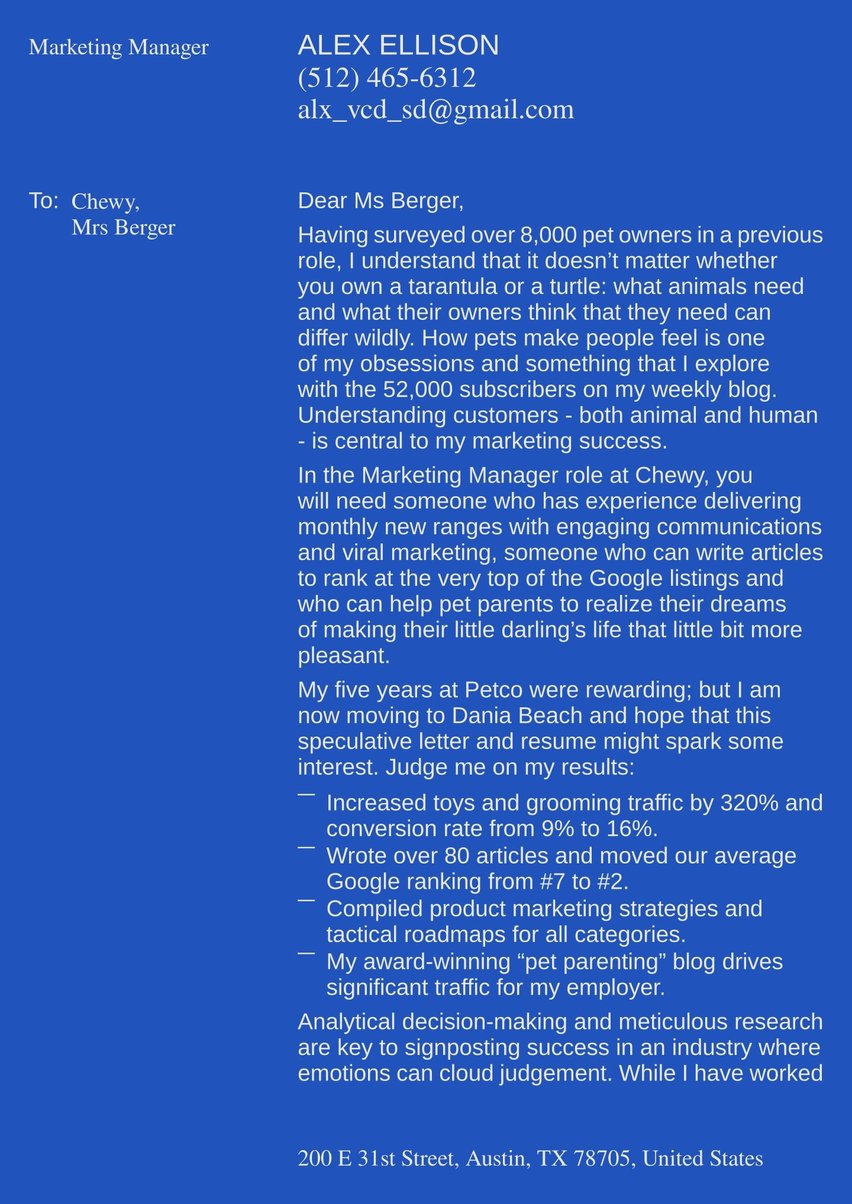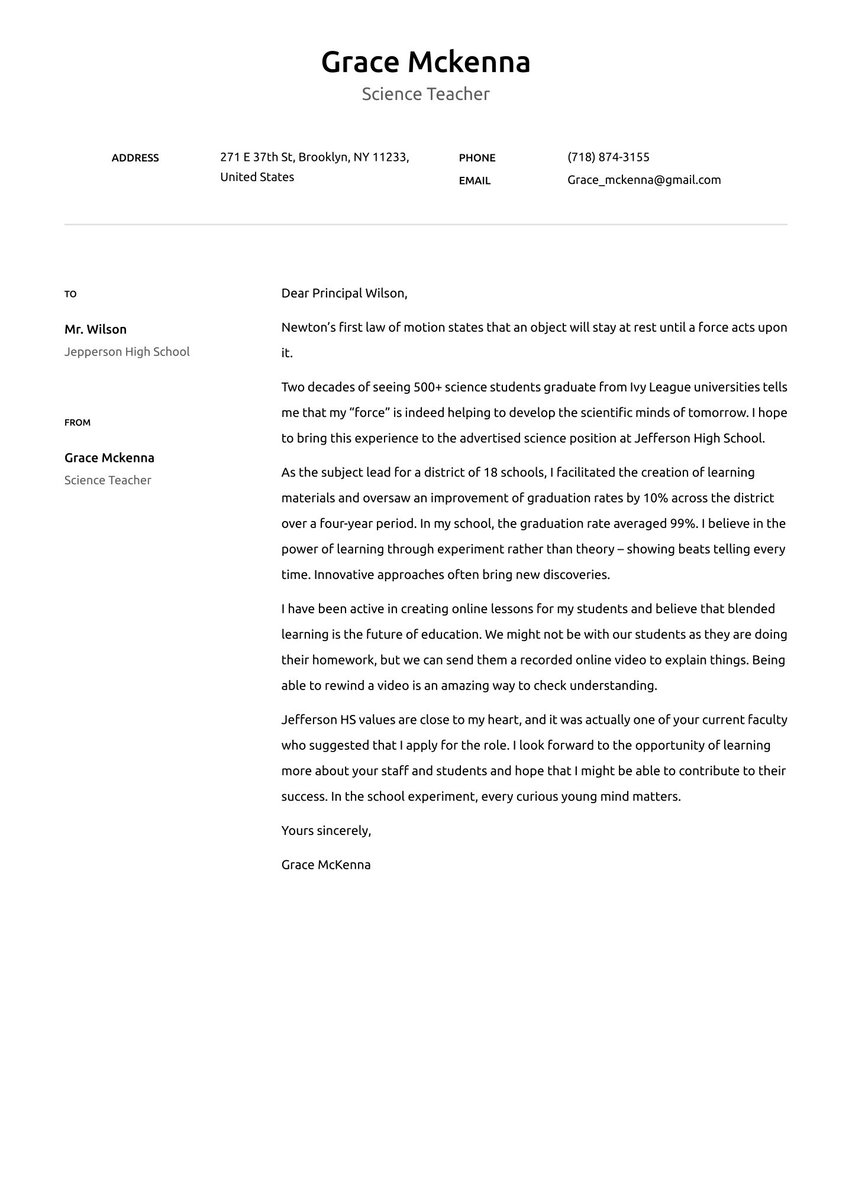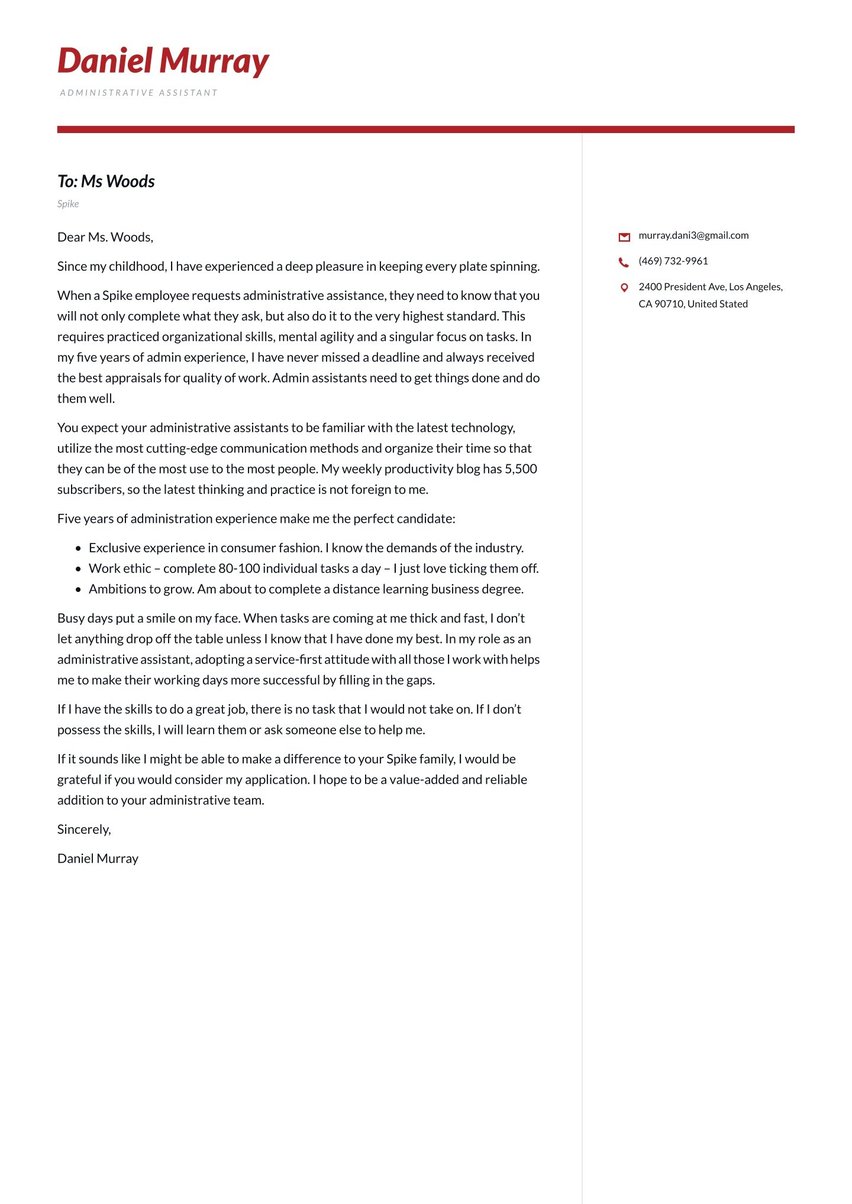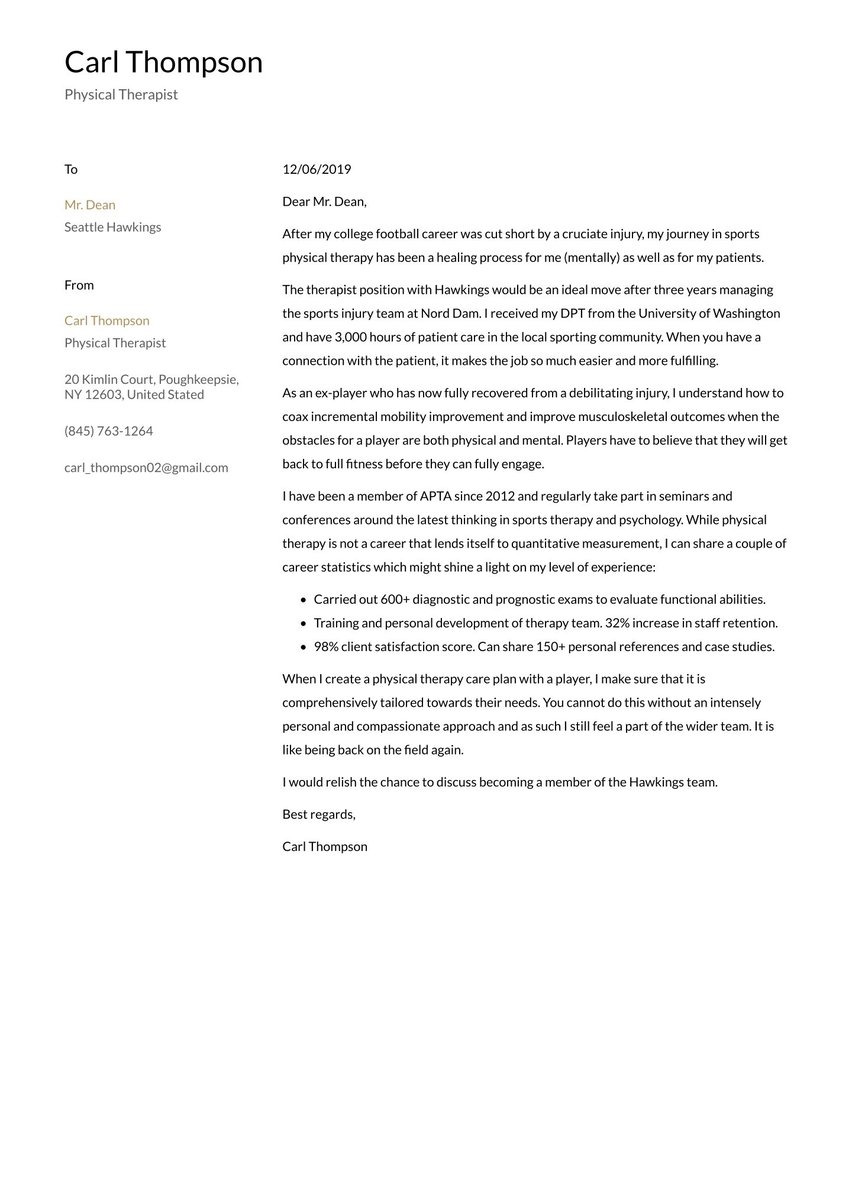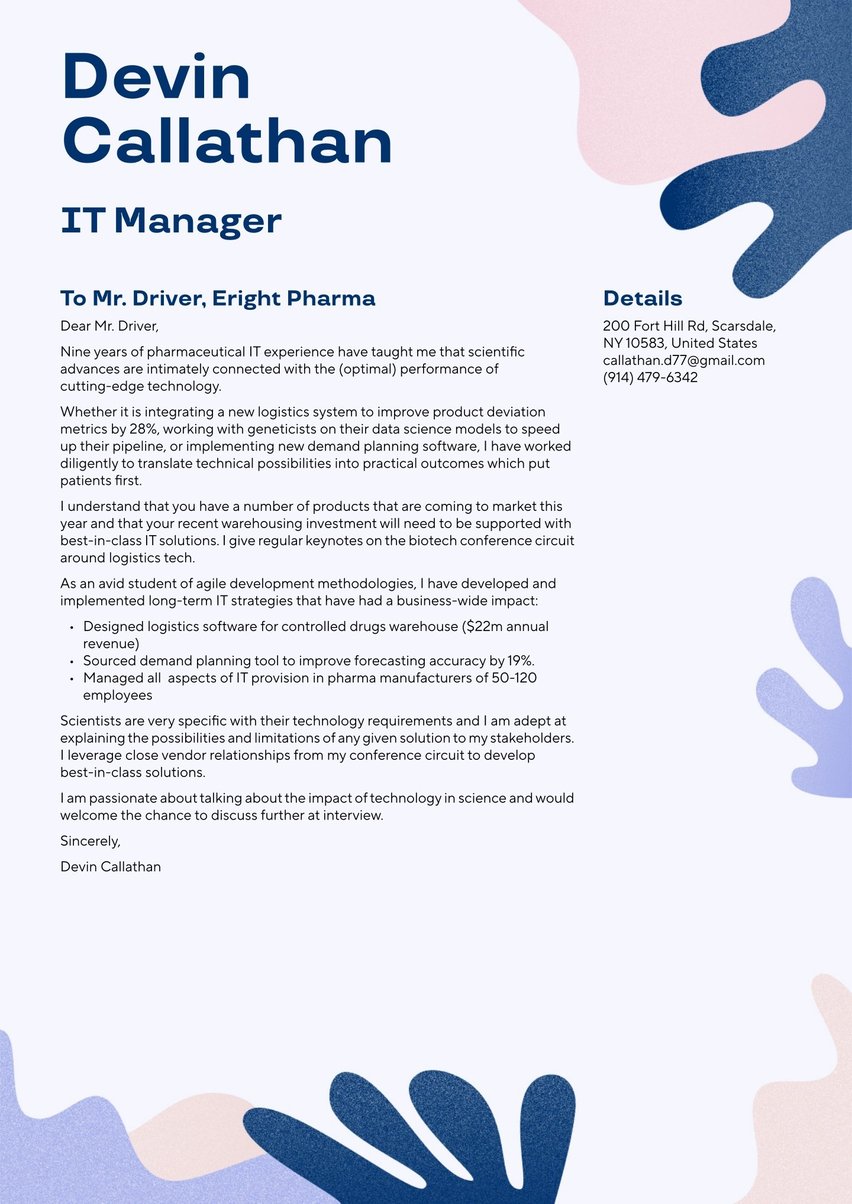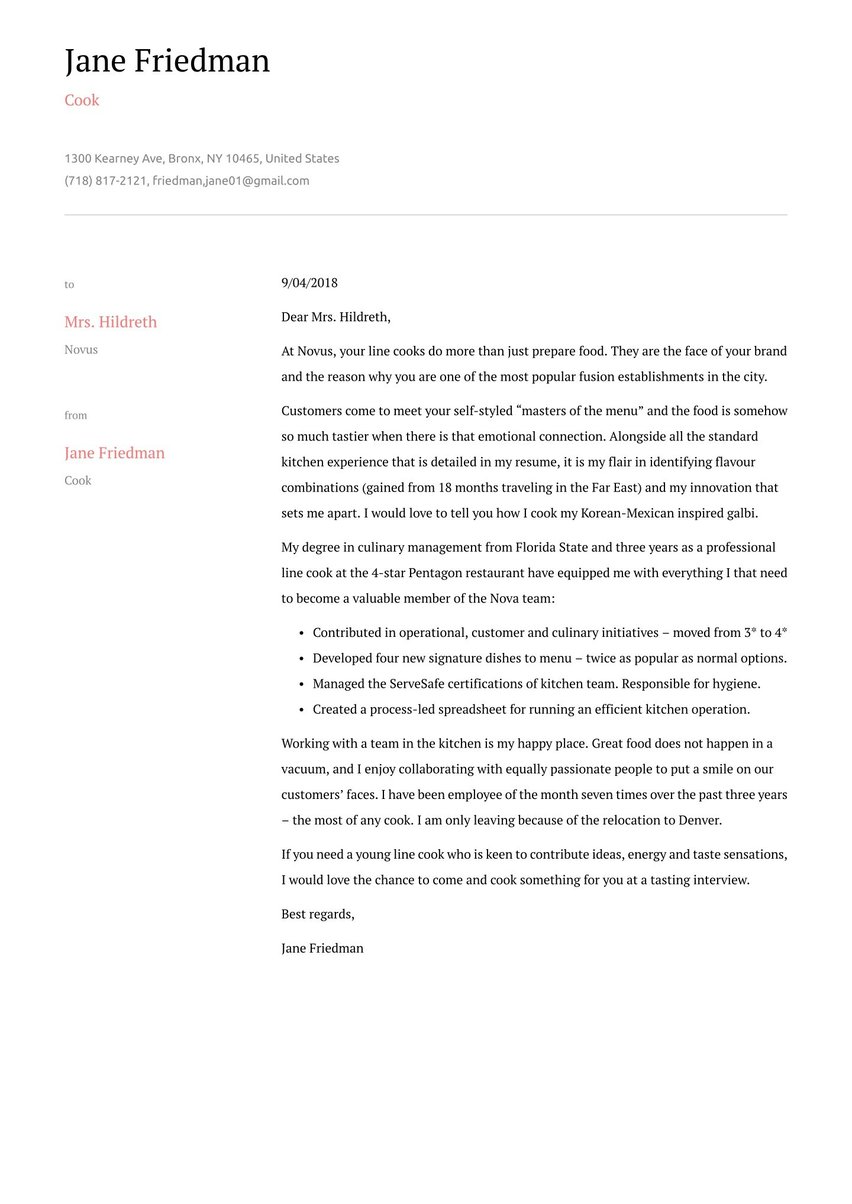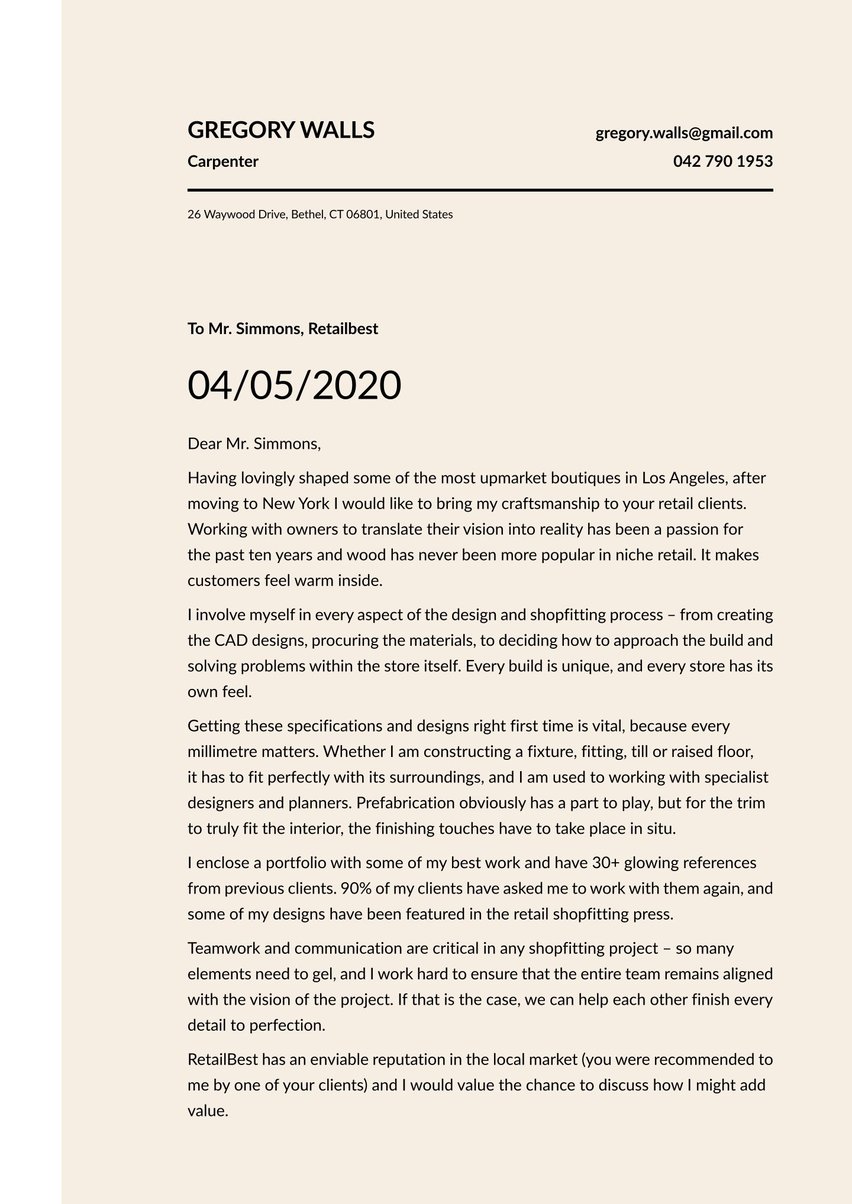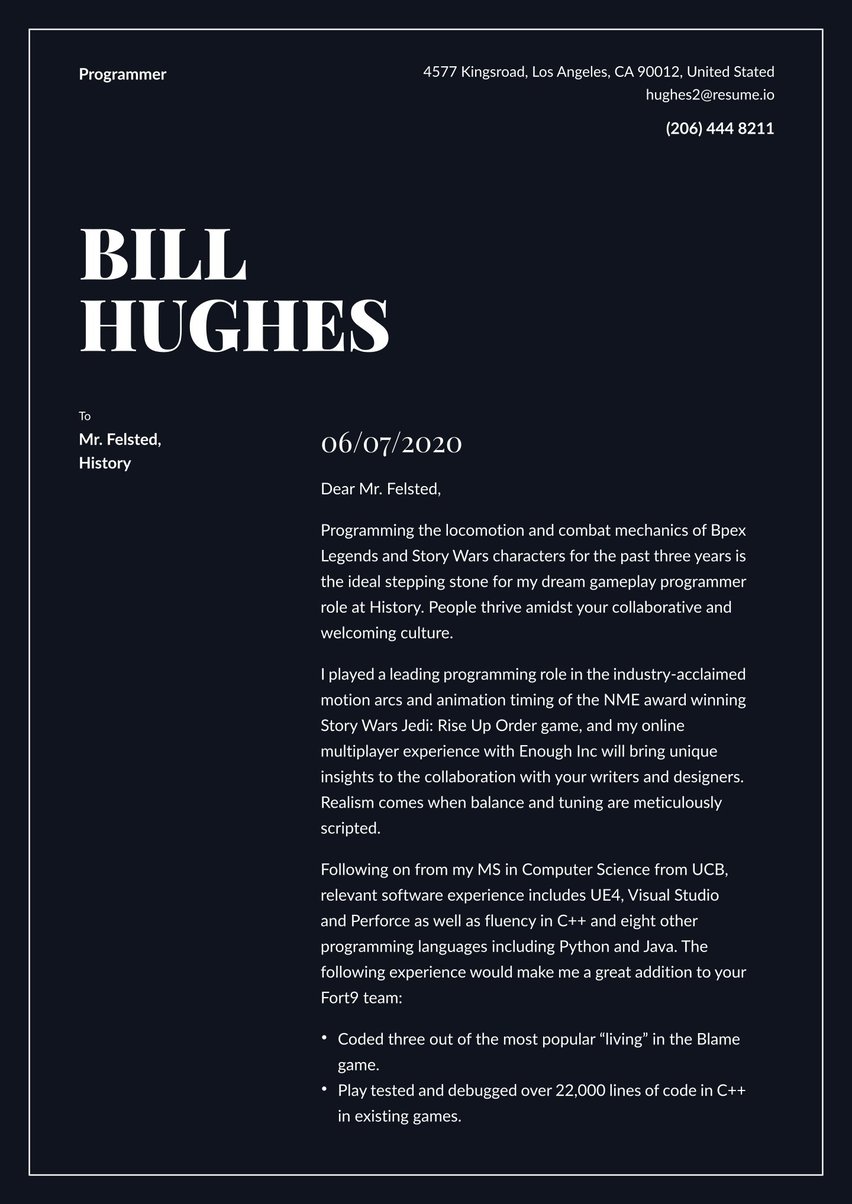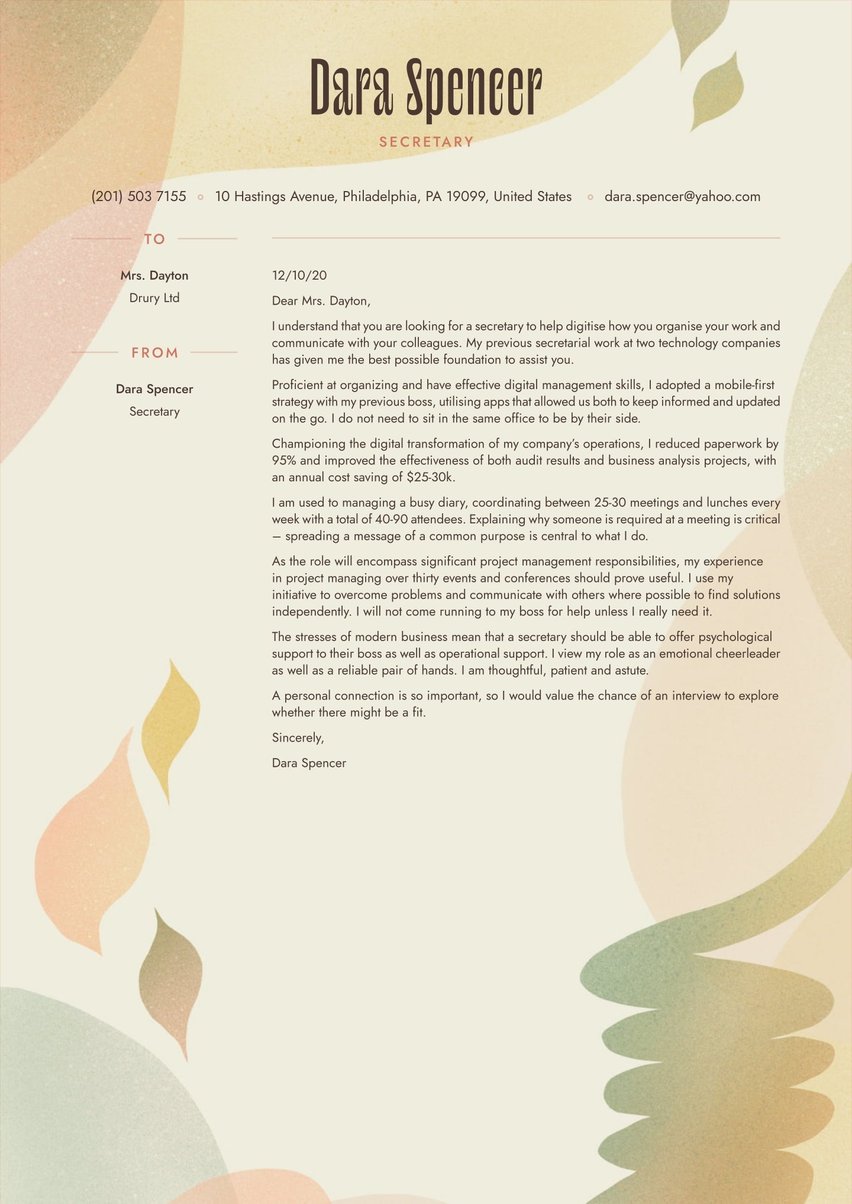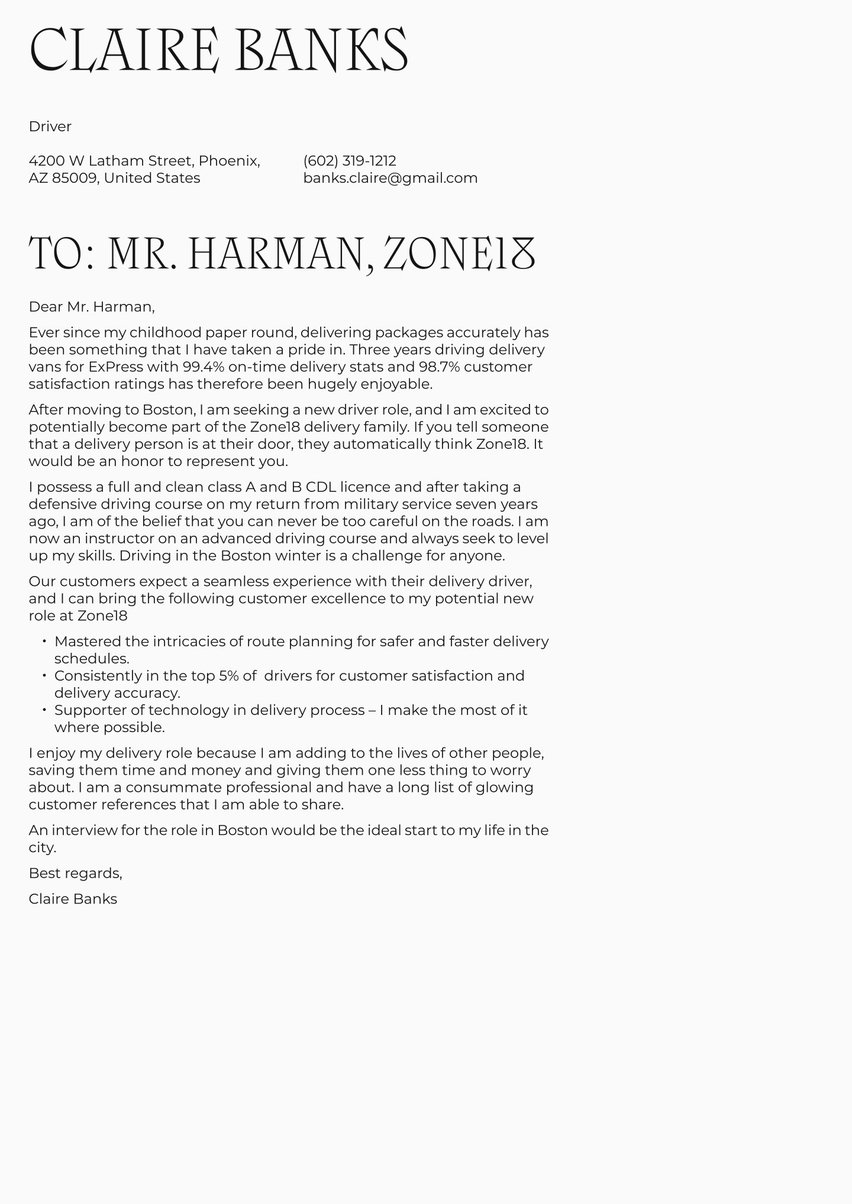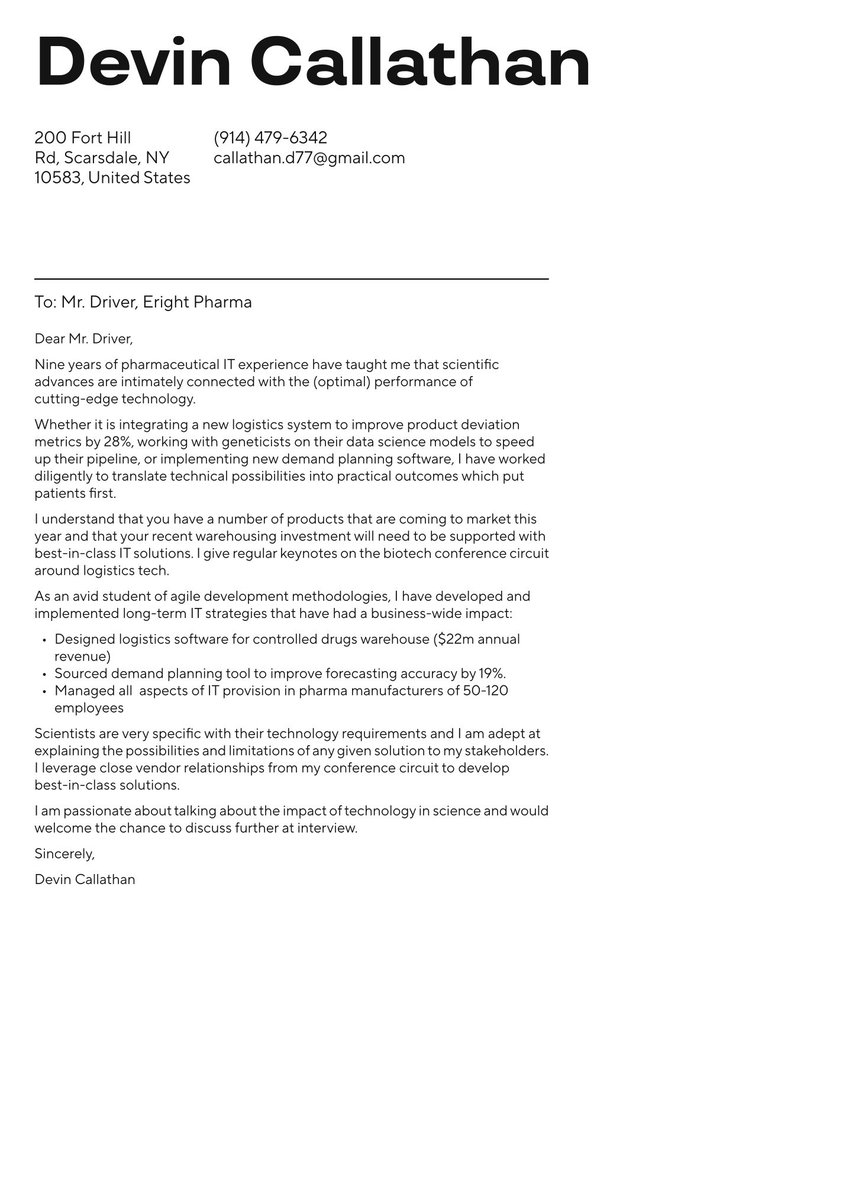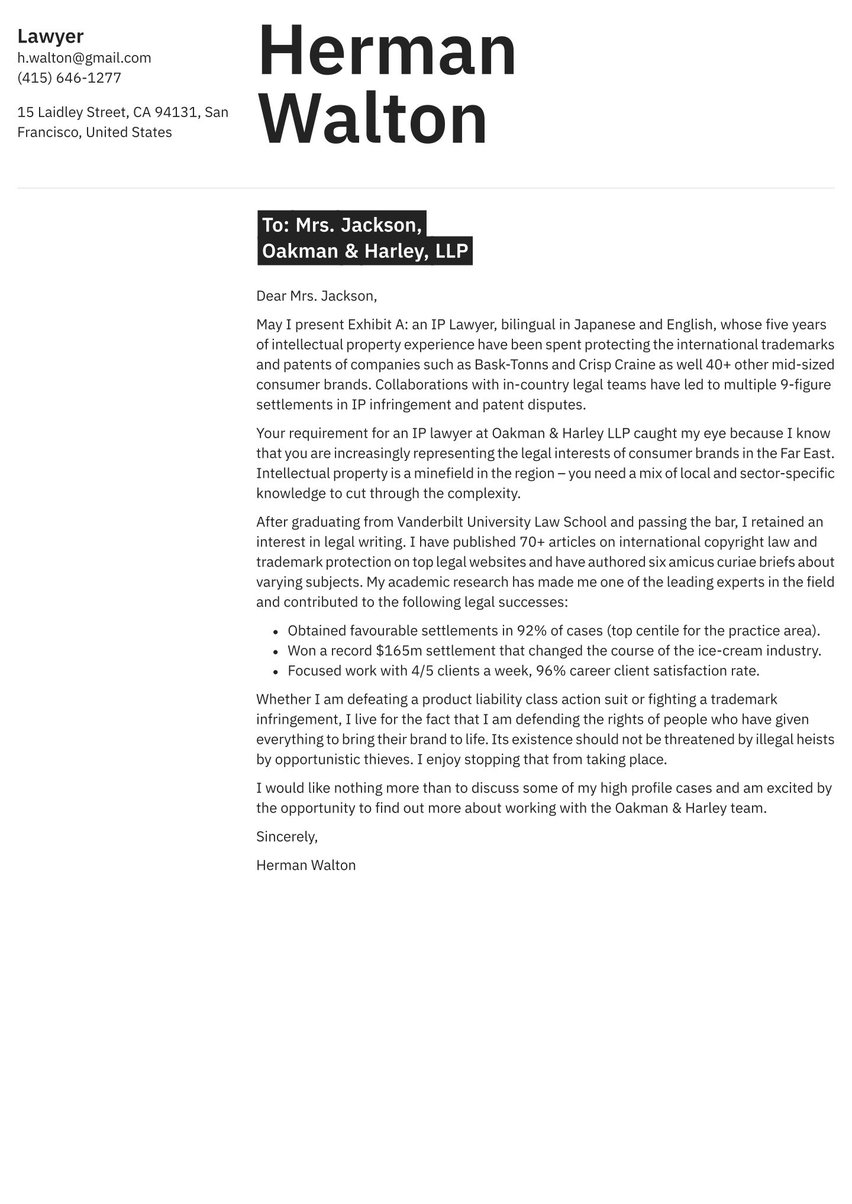If you’re an event manager in search of work, a persuasive cover letter can be the ticket to your dream job. In fact, a cover letter enables you to showcase the very talents that make you successful as an event manager, including your communication skills, people skills, organizational skills and attention to detail.
This guide will explore all aspects of how to write an effective event manager cover letter, including:
- Why a cover letter is an essential part of a job application
- How to structure and write an event manager cover letter
- How to design an event manager cover letter
- Psychology tips to writing a persuasive cover letter
- Key mistakes to avoid.
Event manager pay and job outlook
The U.S. Bureau of Labor Statistics includes event managers under an occupation it describes as “meeting, convention and event planners.” The median wage for these workers in the U.S. was $51,560 in 2020.
In May 2020, these were the top industries in which meeting, convention and event planners worked in the U.S., along with their median annual wages:
- Administrative and support services: $53,980
- Religious, grantmaking, civic, professional and similar organizations: $53,220
- Accommodation and food services: $44,540
- Arts, entertainment and recreation: $44,310
Source: https://www.bls.gov/ooh/business-and-financial/meeting-convention-and-event-planners.htm#tab-5
In 2020, the BLS projected job growth in this sector at a robust 18% from 2020 through 2030, much higher than the average for all occupations.
It's worth noting that the COVID-19 pandemic has had a substantial negative impact on the industry. Many event managers today will have an edge if they are skilled at organizing virtual events that are attended remotely.
According to the BLS, there were about 125,900 jobs for meeting, convention and event planners in 2020. These are their largest employers:
- Religious, grantmaking, civic, professional and similar organizations: 20%
- Administrative and support services: 10%
- Accommodation and food services: 9%
- Arts, entertainment and recreation: 8%
- Self-employed workers: 4%
Source: https://www.bls.gov/ooh/business-and-financial/meeting-convention-and-event-planners.htm#tab-3
For additional information, review some of our marketing cover letter examples and writing guides:
- Digital Marketing cover letter sample
- Marketing Manager cover letter sample
- Marketing cover letter sample
- Social Media Manager cover letter sample
- Writer cover letter sample
- Marketing Coordinator cover letter sample
- Public Relations cover letter sample
- Event Coordinator cover letter sample
- Marketing Assistant cover letter sample
- Brand Ambassador cover letter sample
-
Copywriter cover letter sample
Why does an event manager need a cover letter?
You need a cover letter to apply for a job in virtually any profession, but for event managers there are considerations that make it especially critical.
Event managers are organizers, communicators, persuaders and promoters. And all the skills that make them good at their jobs can be showcased in a well-written cover letter:
- Organization: Good cover letters are organized according to a coherent structure, so a well-written cover letter shows that you have an organized mind and outstanding attention to detail.
- Communication: Event managers have to communicate effectively with clients and vendors, and your cover letter should put your communication skills on full display.
- Persuasion: Event managers sometimes have to persuade reluctant clients to go with a plan that will make their event better. And a cover letter is nothing if not an exercise in persuasion.
- Promotion: Nobody wants to manage an event where nobody comes, so event managers also have a stake in promotion. And in a cover letter you’re promoting your single greatest asset, yourself.
Surveys have shown that the failure to include a cover letter with a resume is among the top reasons job applicants are rejected.
Although there are a few employers who prefer to receive a resume only, you should always include a cover letter with a resume unless you’re specifically asked not to. It’s a standard practice and an expected courtesy, so if you don’t do it, you’ll already have one strike against you.
How to structure and write an event manager cover letter
In writing a cover letter you should follow a basic structure, and if you do so it will make the job easier. A cover letter should usually be one page only, a maximum of 400 words, and these are the components it should contain:
- Cover letter header
- Greeting
- Introduction
- Body
- Conclusion
- Sign-off
Let’s talk about what each of these should contain.
Cover letter header
Once known as a letterhead, the header is the attractively designed element at the top of a letter that contains your name, occupation, address, email and phone number.
In the age of email, many people have forgotten the old convention of identifying the sender at the top of the page rather than the bottom. But if you ever received an official business letter in your snail mail (like from a lawyer, God forbid), it probably had the sender’s contact info at the top, perhaps with a company logo or some special typographical flourish. That’s the idea of a cover letter header.
The main function of the header is obvious — to let employers know how to contact you if they’re interested. But it should also serve as a design element, giving the page a more attractive look at a glance.
Although the rest of your letter will be nothing but black paragraphs, you have more license to be creative with the design of the header. The sender’s name is often the first and largest element on the page, and it may be in a more stylized font. The header may contain some color element, and it should be laid out in such a way that it builds in an eye-pleasing amount of white space.
Take a look at the cover letter templates offered by resume.io to get an idea of what professionally designed headers look like. Find one you like, download it, fill in your own information, and you’ll save yourself a lot of trouble designing your own.
Give your resume and cover letter a matching look.
Your resume and cover letter should look like a matching set, designed to go together, meaning they should have the same fonts, styles and colors. And the headers of your resume and cover letter should look very similar if not identical.
Aligning the styles of these documents shows that you pay attention to detail and understand the importance of coherent design. But failing to do so will give your job application a sort of scatter-brained feel, like you couldn’t decide on one style, so you’re just throwing several different ones on the page. It may also like you’ve written a new cover letter but you’re sending an old resume that you didn’t bother to update.
Cover letter greeting
“Dear Mr. X” or “Dear Ms. Y” are the time-honored ways of writing a cover letter greeting, also known as a salutation.
Some people choose to replace the word “Dear” with the less formal word “Greetings” or “Hello.” Study the style of the company you’re targeting to see how it addresses the public on its website or in other communications. If it has a very laid-back style, you may be able to use a more casual style yourself.
If you happen to know the person you’re writing to, it may be perfectly acceptable to address him or her by first name. But the general rule is: Beware of being too casual in a letter where you’re asking for a job.
Dear Mr. Martin:
Always try to address your cover letter to the hiring manager by name.
Many job listings don’t provide the name of the person you need to write to, so many cover letters are simply addressed to the entire company, a department within that company, or something like “Dear XYZ Co. Hiring Team.”
This is unavoidable at times, but it’s not optimal. You should always try to find out the name of the person making the hiring decisions and address that person by name.
People like reading their own names, so this has a positive psychological effect. It also shows your attention to detail and thoroughness if you’ve gone to the trouble of finding out the name of the correct person to write to. If you can’t find this info online, it may be worth simply calling the company to inquire.
Cover letter introduction
The introduction of a cover letter is a first paragraph in which you identify the job you’re seeking and make your opening case about why you would be an excellent candidate.
The introduction should use active, interesting language that gets the reader’s attention and compels him or her to read on. You need to hook the fish before you reel it in.
If you have years of experience as an event manager, the introduction is a good place to mention that. See the event manager cover letter example attached to this page, in which the writer cites both a relevant degree and some impressive experience with Marriott during the Olympics.
After graduating with a BA degree in Hotel Management from Miami University, my first role in the hospitality industry set the tone for my career. I was sent on a year’s placement for Marriott to London during the 2012 Olympics, helping their London hotel network to organize events and promote their services at the various sporting venues.
Body of your cover letter
The body of your cover letter, the central paragraphs, are the “meat and potatoes,” where you must make the primary case for your candidacy.
Use the body of the cover letter to highlight your work experience — not just saying where you worked or for how long, but using facts and figures to detail your specific accomplishments. Notice how the attached cover letter sample contains several statistics: percentage increases in attendance and profits, event budgets and total number of events handled.
The body of your letter is also a good place to highlight your educational credentials, as well as any certifications you may hold in your field.
You may also choose to highlight relevant skills that make you good at what you do (but avoid vague clichés that don’t say much, like calling yourself a “self-starter” or a “team player”).
You can also use the body of your letter to discuss why you want to work for the employer you’re addressing. Notice that in the attached cover letter sample, the job applicant wishes to work for a “boutique hotel that has a little more personality,” and he says “your hotel has an enviable reputation for….”
This sends a clear signal that this isn’t just a generic cover letter that you’re sending to 50 employers, but that you want to work for this employer. It’s important that each cover letter you write be targeted to a specific employer.
It was at this point that I understood that my passion was in the events side of hospitality rather than guest operations. My past two roles with Marriott have been spent delighting delegates, facilitating educators and collaborating with partners. There are so many moving parts to any event, and my Marriott peer appraisal grades for “efficiency and organization” were always 9.2/10 or above.
Sales and Marketing were a significant part of my remit at Marriott, increasing event numbers by 40% over four years and generating YOY profit growth of 23%. On the operational side, I’d like to share an overview of a few key competencies:
- Coordination of room configuration, technology setup and equipment procurement
- Management of event budgets up to $220,000 with maximum attendance 3,500+
- Supplier, client and speaker planning, commercial negotiations and issue resolution
- 190+ events over a 4-year career, promoted from Asst. Manager to Event Manager
After moving to Seattle, I am seeking a role with a boutique hotel that has a little more personality to offer than the bigger hospitality companies. Your hotel has an enviable reputation for organizing well-being retreats and mindfulness-led corporate training, and I enclose a link to my personal blog to demonstrate my interest in the area. My social media following could well be a reliable source of potential clients.
Conclusion and call to action
The conclusion of your letter, the last paragraph, needs to contain a call to action that encourages the hiring manager to do something about your letter.
You might say that you’re eagerly looking forward to a reply, or that you’re available anytime for an interview or just an informal follow-up by phone. In the attached cover letter example, the writer finds an elegant but not pushy way of saying this:
I would welcome the chance to visit and understand more about your operation, your plans for the future and how I might be able to contribute.
Be assertive, confident and positive about your desire for follow-up to discuss these ideas further.
Come off as arrogant, entitled or presumptive; you want to make a reasonable request for follow-up that doesn’t sound like a demand.
Sign-off
In your sign-off (or signature line), close with a simple “Sincerely,” “All my best,” “Best regards” or the equivalent. Add a space below that and type your full name.
In a printed letter, you would always include your actual signature above your typed name. In electronic communication this is not necessary, although you can choose to include a digital signature if you like.
Sincerely,
Simon Pringleton
Designing a standout cover letter
Good cover letter design is just as important as good cover letter content. So you’ll want to follow certain guidelines to ensure that your letter is elegantly designed and properly formatted.
- Fonts: Use an easy-to-read, modern font, nothing avant-garde or strange-looking.
- Font size: Choose a font size no smaller than 10 points or larger than 12. If your letter exceeds one page (and most first drafts will), do not use a tiny font size to force it to fit. Cut anything from your letter that isn’t strictly necessary, and avoid resorting to formatting tricks to cram it onto one page.
- Text alignment: Text should be aligned left, not justified from margin to margin, to avoid a blocky look and provide a little space between the end of each line and the right margin.
- Margins: Include a 1-inch margin on the top, bottom, right and left of your cover letter.
- Paragraphs: Do not indent paragraphs, but leave a space between them.
- Save as PDF: Although some employers may ask for a Word document, a PDF is generally the safest choice because this file type will preserve all your formatting choices — making the document look the same on the recipient’s computer as it does on yours. The exception to this is when submitting via an online application system, which usually requires Word files (make sure to check the system/submission requirements).
- Use a cover letter template: The safest way to sidestep any design pitfalls is to use a professionally designed template or cover letter example like those we offer at resume.io, which take care of all the design and formatting for you.
Writing a persuasive event manager cover letter
As an event manager, you’re not a mind reader, but you’re skilled at anticipating the wants and needs of your clients and their guests. It’s not your job to plan an event that you will like, but one that they will like.
Your cover letter should reflect this kind of client focus. Don’t just write the kind of letter you want to write, but write the kind of letter they would want to receive.
Always remember that you are not writing this letter to convince anyone that you deserve a job — but to convince them that you can make their lives easier, raise their bottom line and make their company more successful. In other words, hiring you will ultimately earn them more money than it will cost them.
You want to try to get inside the head of the person you’re writing to. If you were in their shoes, what would you want to hear from a job candidate?
Reread, review and revise your letter multiple times, always trying to imagine how it will be received. Did you include all the crucial information that the employer will be looking for? Did you leave out anything important?
Remember that your tone of voice is very important — always professional, inviting and engaging, but never arrogant or presumptive. You don’t want to say you’re the perfect event manager, but you want them to get that idea on their own.
Common mistakes to avoid
These are some of the common mistakes people make in writing cover letters, all of which you must take pains to avoid:
- Typos and other errors in spelling or grammar: Your cover letter needs to be flawlessly written — no mistakes allowed. It’s just one page and it has to be right.
- Clichés and fluff: Clichés are words and phrases that every recruiter has seen a thousand times before, and fluff is language that sounds fancy but says basically nothing. Use fresh, original language, and make every word count.
- Mass-produced cover letters: If you send the same cover letter to all employers, they will notice that you don’t say anything about why you want to work for their company specifically. Every cover letter should be customized for the employer you’re targeting.
- Irrelevant info: Resist the urge to talk about hobbies or interests that have no bearing on the job you’re seeking. Use the short space you have to stress your job-relevant experience and skills.
- Bad formatting: Strange fonts, tiny font sizes, inadequate margins, garish headers and other design fails can disqualify your letter at a glance.
Key takeaways
- A cover letter is an essential part of a job applicant for an event manager. Use it to showcase your personality, enthusiasm, organization and persuasion skills.
- Structure your letter correctly to make sure it covers all the bases without veering into anything irrelevant.
- Design your letter correctly so that it looks as good as it reads.
- Try to get into the mind of your readers and focus on their needs, not yours.
- Strenuously avoid common errors like typos, clichés and bad formatting.
Remember that the cover letter templates at resume.io provide an easy-to-follow framework that will help you sidestep a multitude of errors. Best of luck in your job search!


